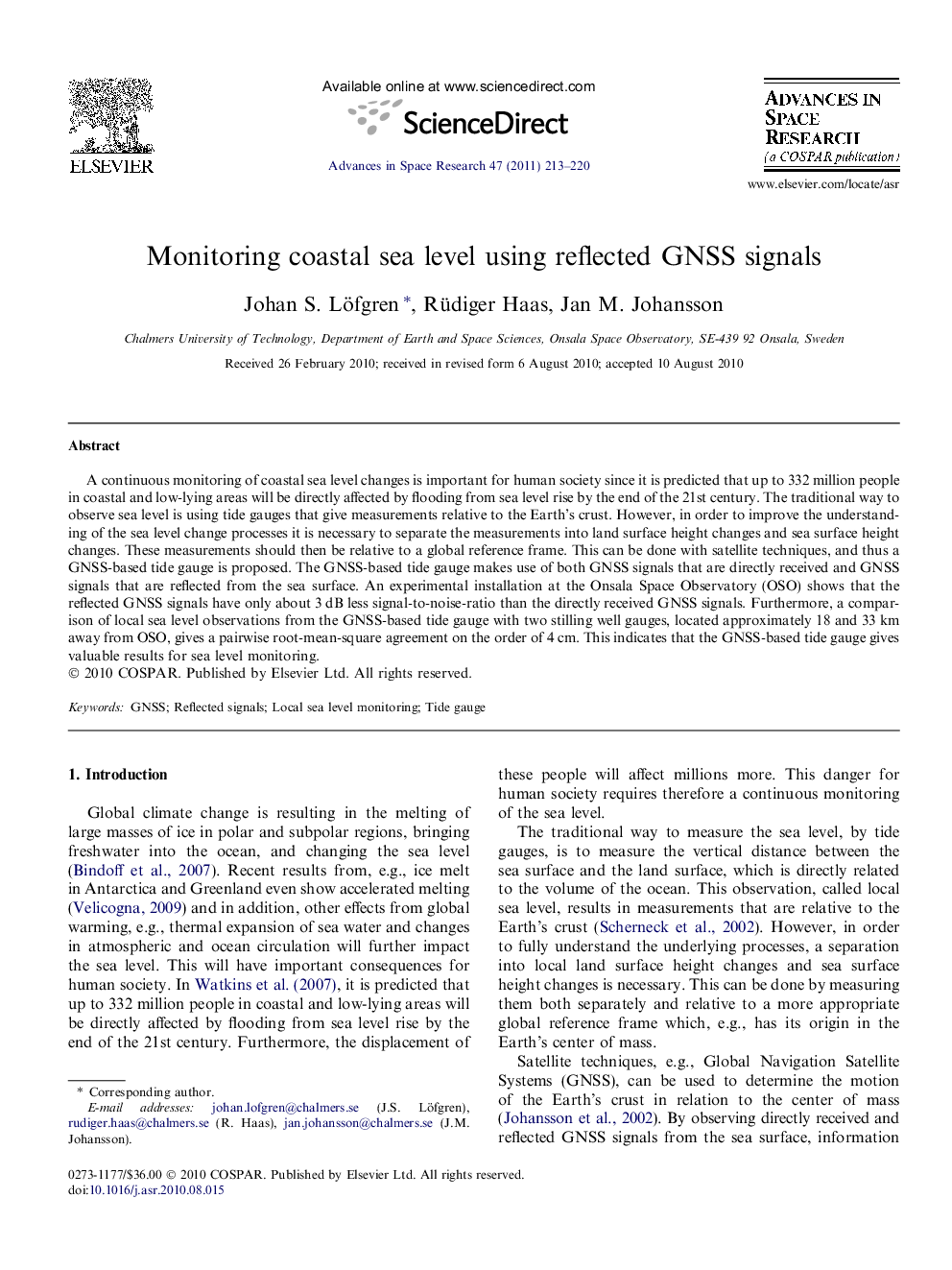| کد مقاله | کد نشریه | سال انتشار | مقاله انگلیسی | نسخه تمام متن |
|---|---|---|---|---|
| 1766983 | 1020172 | 2011 | 8 صفحه PDF | دانلود رایگان |

A continuous monitoring of coastal sea level changes is important for human society since it is predicted that up to 332 million people in coastal and low-lying areas will be directly affected by flooding from sea level rise by the end of the 21st century. The traditional way to observe sea level is using tide gauges that give measurements relative to the Earth’s crust. However, in order to improve the understanding of the sea level change processes it is necessary to separate the measurements into land surface height changes and sea surface height changes. These measurements should then be relative to a global reference frame. This can be done with satellite techniques, and thus a GNSS-based tide gauge is proposed. The GNSS-based tide gauge makes use of both GNSS signals that are directly received and GNSS signals that are reflected from the sea surface. An experimental installation at the Onsala Space Observatory (OSO) shows that the reflected GNSS signals have only about 3 dB less signal-to-noise-ratio than the directly received GNSS signals. Furthermore, a comparison of local sea level observations from the GNSS-based tide gauge with two stilling well gauges, located approximately 18 and 33 km away from OSO, gives a pairwise root-mean-square agreement on the order of 4 cm. This indicates that the GNSS-based tide gauge gives valuable results for sea level monitoring.
Journal: Advances in Space Research - Volume 47, Issue 2, 15 January 2011, Pages 213–220